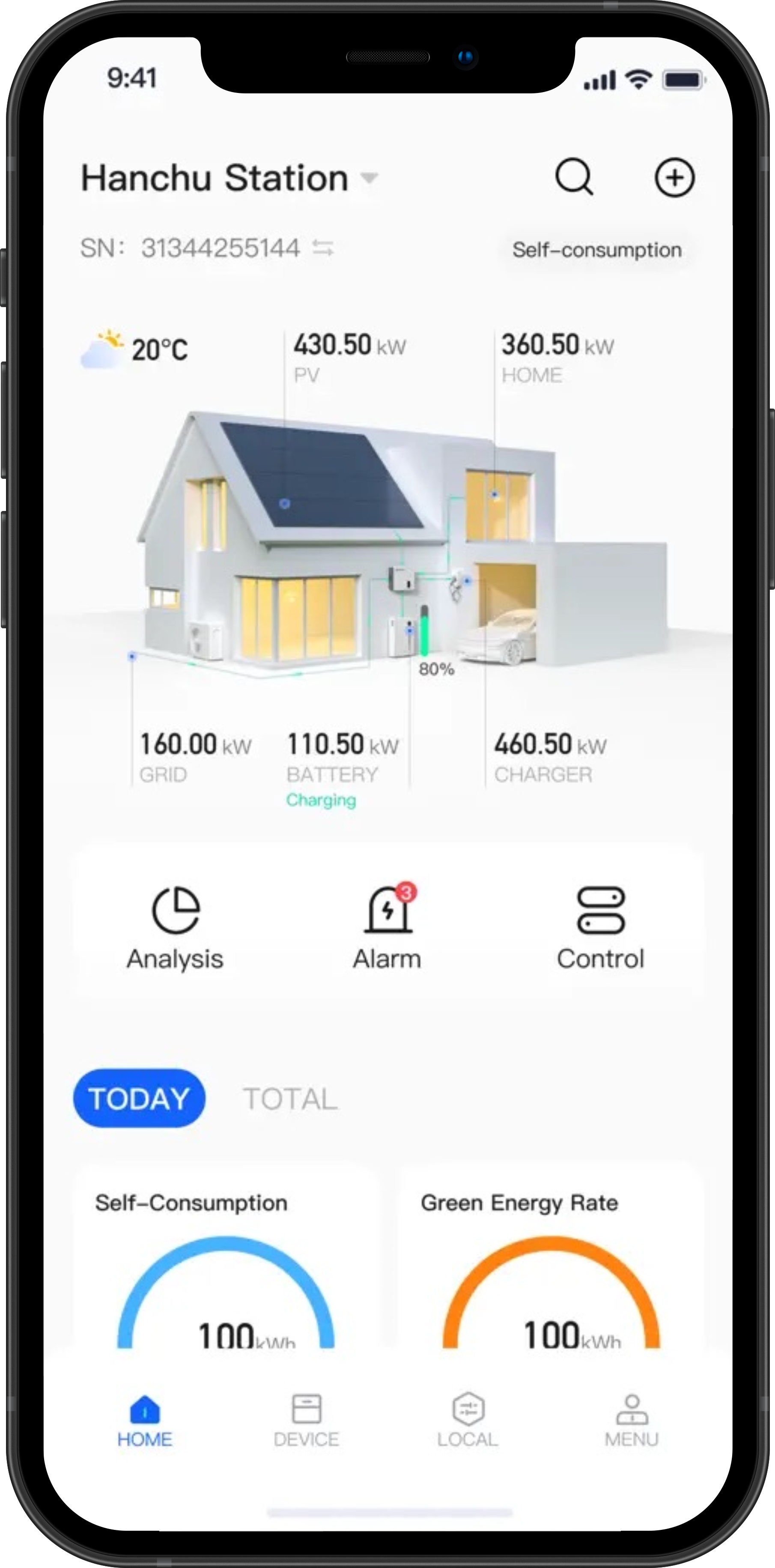The UK Solar Roadmap 2025 is set to reshape the solar industry — and dramatically increase battery storage demand nationwide. Discover what the new solar policy changes mean for your installation projects, and how HANCHU can help you maximise efficiency and profitability in the transition.
In a Nutshell: The Future of the UK Solar Industry
The infographic below summarises some of the key points from the Solar Roadmap 2025 & Future Homes Standard. Take a look:

UK Solar Roadmap Changes: What Installers Need to Know
A deeper dive into the key points of both the Solar Roadmap and Future Homes Standard – and what they mean for solar and battery installers:
£13.2 Billion Warm Homes Plan Investment
The government’s Warm Homes Programme commits £13.2 billion to accelerate rooftop solar and battery adoption through grants, low-interest loans, and local authority funding. Key initiatives include:
– Warm Homes: Social Housing Fund
– Warm Homes: Local Grant (£500m) for low-income homeowners
Impact on Installers:
Expect higher consumer demand, larger-scale social housing contracts, and increased interest in solar + battery bundles. Installers who understand new solar financing schemes will gain an edge.
Public Sector Solar Projects
Around £200 million is being invested by the UK Government and Great British Energy. From 2025, approximately 200 schools and 200 NHS sites will receive match-funded solar projects. The NHS is the single biggest public sector energy user, with an estimated annual energy bill of £1.4 billion. This phase will cover 1/3 of UK NHS sites.
Impact on Installers:
Secure, long-term contracts with public sector clients may be available, ranging from small rooftops to larger system installations. A further £12m has been set aside for other local clean energy projects, too – expect more in the future if the first phase is successful.
Jobs and Workforce Changes
The solar industry is set to create 35,000 direct roles by 2030 – and even more indirect positions. This is up from 9,000 since 2022, further enforcing the future of the industry. Solar Energy United Kingdom and other official standards bodies are mapping required qualifications for key roles. Hands-on training will be provided for new entrants, all the way up to director-level training, helping installers to build long-term leadership capacity.
Impact on Installers:
Expect greater competition in the near future. On the upside, a higher pool of trained workers (and access to subsidised/industry-backed training) will make scaling your growing business easier in the future.
Warehouse Rooftop Potential
The Solar Roadmap outlines massive untapped potential across commercial and public buildings. The largest 20% of the UK’s warehouses have approximately 75 million square meters of rooftop space, which, if fitted with solar panels, could provide up to 15 gigawatts of solar capacity. Bodies such as the United Kingdom Warehousing Association (UKWA) are currently producing template contracts to address landlord-tenant barriers, too.
Impact on Installers:
A huge market arises, opening new pathways for installers in the commercial rooftop sector and bringing all the spoils of war; multi-megawatt projects, & recurring maintenance to name a few. Public sector contracts may offer reliable pipeline work backed by government funding, and the simplification of landlord-tenant contracts will make it easier for businesses to say yes to solar!
Faster Grid Approvals
Domestic systems less than 14.72kW will now be approved within 10 working days, with anything above 3.68kW per phase requiring DNO approval (some operators now allow 5kW). The Transmission Impact Assessment threshold has also been raised from 1mW to 5mW this May, meaning more projects can connect without triggering lengthy assessments.
Impact on Installers:
Faster and simpler grid connections means quicker project delivery, and reduced admin costs. Higher thresholds unlock opportunities for mid-scale projects with less of the previous hassle, too. For domestic installs, fast-tracked connections give customers faster installation times. A more streamlined process keeps both end-user and installer happy.
The New UK Solar Megafactory
A UK factory in the north-east of England is scaling to produce 6 million meters squared of solar film per annum, equating to saving around 95m tonnes of carbon dioxide over the 20-year lifespan of the product. Following this, a new online business directory is being set up to help developers and installers identify UK manufacturers and suppliers. Fair contracts and fair payment frameworks will also be created to ensure UK manufacturers and contractors compete fairly.
Impact on Installers:
Soon, installers will have access to a wider range of UK-sourced solar products, addressing any potential ethical supply concerns and reduced carbon emissions even further. This could translate into shorter lead times on solar panelling and reduced import risks. Fair payment frameworks will aim to protect subcontractors and smaller installers from unfair contract terms, too.
Exploring Plug-in Solar
The UK Government is conducting a safety study this year to assess the viability of plug-in solar panels. The initiative will aim to unlock opportunities for household renters in the future. As of now, plug-in solar systems are not yet available in the UK due to existing regulation.
Impact on Installers:
An emerging market may be on the horizon for small-scale, portable solar installations. Installers can differentiate or adapt to new installation standards, safety protocols, and a entirely new market if plug-in solar gets the nod.
More on the Future Homes Standard
The UK’s Future Homes Standard requires all new homes from autumn 2025 to be highly energy-efficient and produce much lower carbon emissions. In fact, the next generation of new builds will produce 75-80% less carbon compared to current standards.
Impact on Installers:
– Rooftop solar PV will be mandatory on new homes, making solar a core part of housing construction. Installers will be required to ensure all installations are compliant with MCS standard and designed to integrate with improved efficiency requirements.
– Whilst not legally mandated, battery storage is becoming more aligned with government goals on grid stability and flexibility. Batteries will become the logical “upsell” with solar PV systems.
– A new Home Energy Model is to replace SAP, setting stricter standards for how homes are assessed. Systems must meet the benchmarks or face blocking building compliance approval.
– Gas boilers are out. Heat pumps and low-carbon heating systems will be mandatory. This will create opportunities for integration alongside solar and battery systems.
Download Official Solar Roadmap Document
HANCHU ESS: Battery Storage Ready for the UK’s Future
Built to match the UK’s evolving grid and regulatory standards, HANCHU ESS battery systems combine advanced lithium technology, smart monitoring, and robust safety design. Explore our range below to see how HANCHU supports solar & battery installers in achieving long-term performance and net-zero targets.
Single-Phase Solutions
Reliable and efficient power solutions designed for households & small-scale applications.

Three-Phase Solutions
Advanced three-phase energy systems built to deliver stable performance for medium to large operations.

C&I Solutions
High-capacity solutions engineered to meet demanding needs of businesses & industries.

 Inverters
Inverters
 Batteries
Batteries
 Commercial
Commercial
 EV Chargers
EV Chargers
 Accessories
Accessories
 Heat Pumps
Heat Pumps
 Radiators
Radiators
 Greenlinx
Greenlinx
